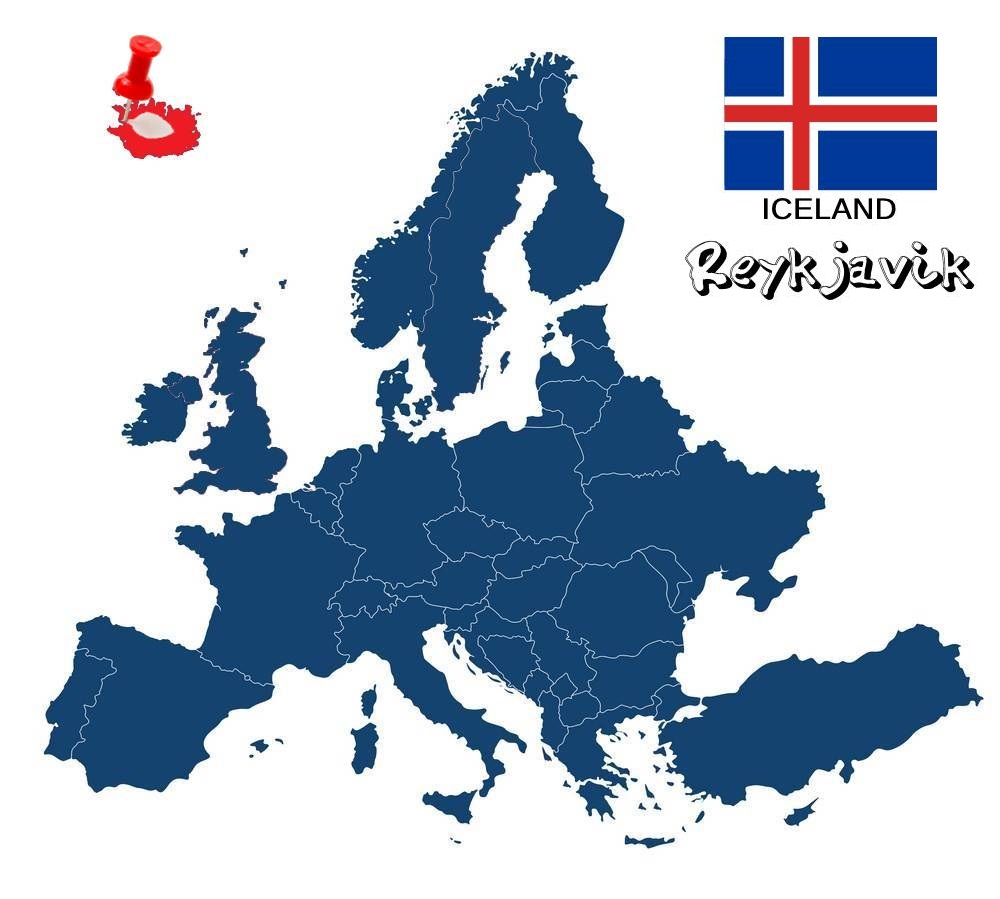
A trip to Iceland is one of the greatest repulsions of every traveler. And Reykjavik, the northernmost capital of the world, the starting point for all excursions to discover the treasures that this country has to offer. This simplicity, that this particular place, exudes will captivate you and give you images and experiences that you will hardly find anywhere else!
A few words about the city
Reykjavik is the capital of Iceland and also the country's largest city. It is the northernmost capital of the world, which is actually quite close to the Arctic Circle. It is located on the southwest coast of the country and has a population of 132,410 within the city and 234,910 in the wider metropolitan area. Although it is a sparsely populated town, the number is impressive if you consider that the total population of the country amounts to 366,700 inhabitants! Reykjavík was only founded in 1786 as a trading city, while in 2008 it was voted by Grist Magazine as the greenest city on the planet! If you love the cold, then Reykjavík is the ideal city for you, and I'll try to help you get to know it better below.
Hallgrímskirkja
Hallgrímskirkja is undoubtedly the most recognizable attraction of Reykjavik and one of the most impressive temples in the world! It is a Lutheran church, located on the top of Skólavörðuhæð Hill in the city centre. The church was designed by one of Iceland's best-known architects, Guðjón Samúelsson, who is said to have sought inspiration for his expressionist design from elements of Icelandic nature. These include glaciers, mountains and lava formations. It is also designed to resemble Thor's hammer, with the handle facing upwards, as a nod to Iceland's religious history. The church took 41 years to build, with construction starting in 1945 and being completed in 1986! The interior of Hallgrímskirkja is not as sophisticated, since as a Lutheran Church it is quite minimalist, however it is just as beautiful. Entrance to the church is free, but if you wish to climb the tower, you will have to pay 1000 Icelandic krona, that is, about 6 euros and seventy cents. The panoramic view of the city from above will reward you.
Laugavegur
Leaving the Cathedral behind, you will find yourself on the Laugavegur pedestrian street. This is Reykjavík's main shopping street, known for its boutiques, restaurants and bars. Of course, as in the whole of Iceland, the prices there are extremely high, but a walk is definitely more than worth it. The side streets of this particular pedestrian street, however, are of even greater interest. The most famous of these is Rainbow Street, dressed in rainbow colors to celebrate Reykjavík Pride! Some sidewalks have games painted on them, such as a snake, while another is a starting point for runners! Ultimately, on this street you will find two special museums, the Phallological Museum (Íslenzka Redasafn) and the miniature museum dedicated to punk music (Pönksafn Íslands)!
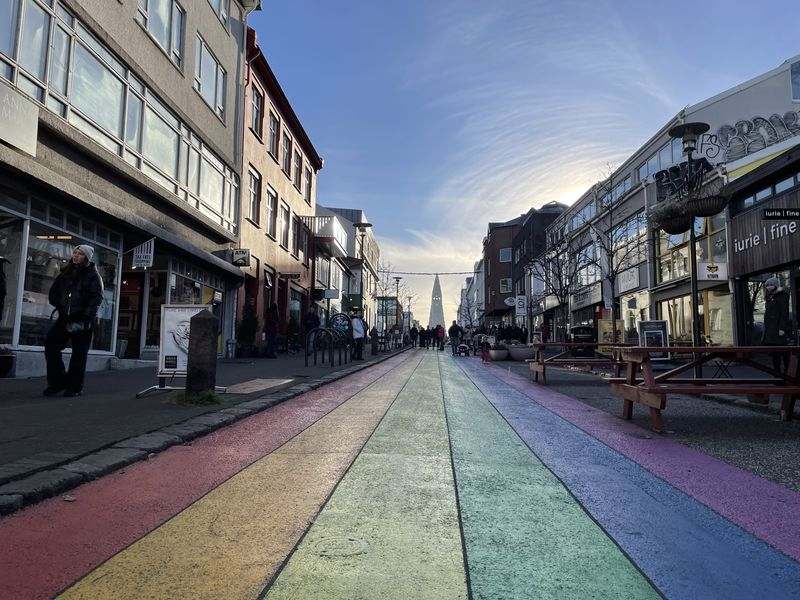
Tjörnin
Reykjavík's city lake, known as Tjörnin, is one of the most beloved and iconic spots in the center of the Icelandic capital. It was first formed at the beginning of the 9th century, separated from the sea by a barrier of gravel. Of course, it became a body of fresh water as a result of the complete separation of sea water from it only in 1989! According to the legend, two old ladies lived on opposite sides of the lake and regularly washed their clothes in the water. One day, while both were cleaning their socks, an argument ensued over who should have rights to all the fish in the pond. Upon the quarrel both ladies entered the water and, in a moment of magic, all the fish became bugs and crustaceans. Since then, fishing in the lake has been banned. But Tjörnin has hundreds of ducks and swans all year round, due to the fact that one corner of the lake is geothermally heated so that it never freezes. These magnificent birds have become the attraction of the lake and are very familiar with people. In winter, the lake freezes so thickly (everywhere except the heated part) that it is possible to skate on it! Finally, around Tjörnin you will find some significant cultural sites such as the National Gallery of Iceland (Listasafn Íslands), the Tjarnabío Theater and Reykjavík City Hall (Ráðhús Reykjavíkur)!

Harpa
One of the most impressive buildings in the city is the Harpa Concert-Conference Hall. The building's award-winning architecture is uniquely dazzling. The honeycomb exterior with the glass facade is inspired by the stony landscape of Iceland. It is equally impressive both in daylight, and at night, as the windows change to a rainbow of colors. The interior of the building is equally impressive, and there are two restaurants serving authentic Icelandic food and a small gift shop with unique handmade items. Admission to Harpa is free, but if a show is being played there, it's definitely worth watching.
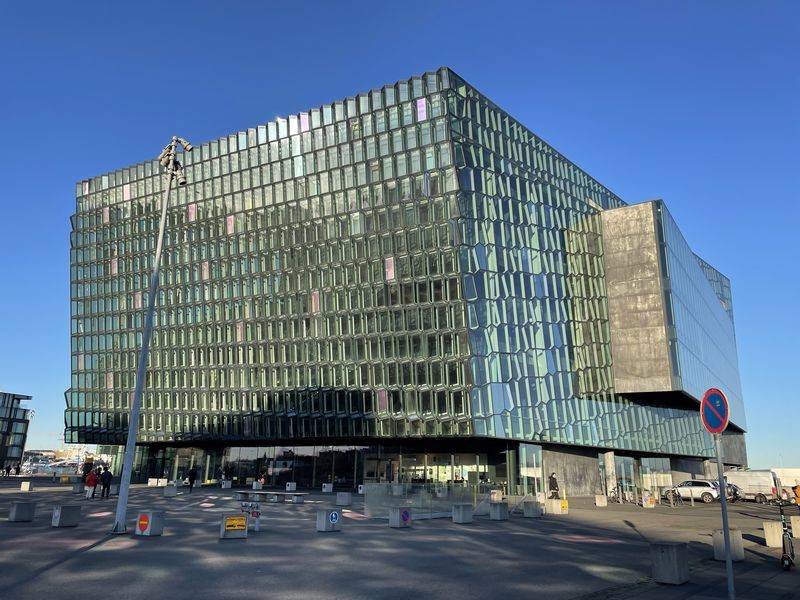
Sun Voyager
Reykjavik's northern waterfront is one of the most popular spots in the city for both locals and tourists. When the weather is nice, you will see dozens of people walking, running and cycling enjoying the wonderful view of the ocean. Since 1990 there is also the impressive sculpture of the Sun Voyager, which has been crafted by John Gunnar Arnason and refers to a Viking ship! According to the locals, this spot is the best place to enjoy the sunrise or sunset.
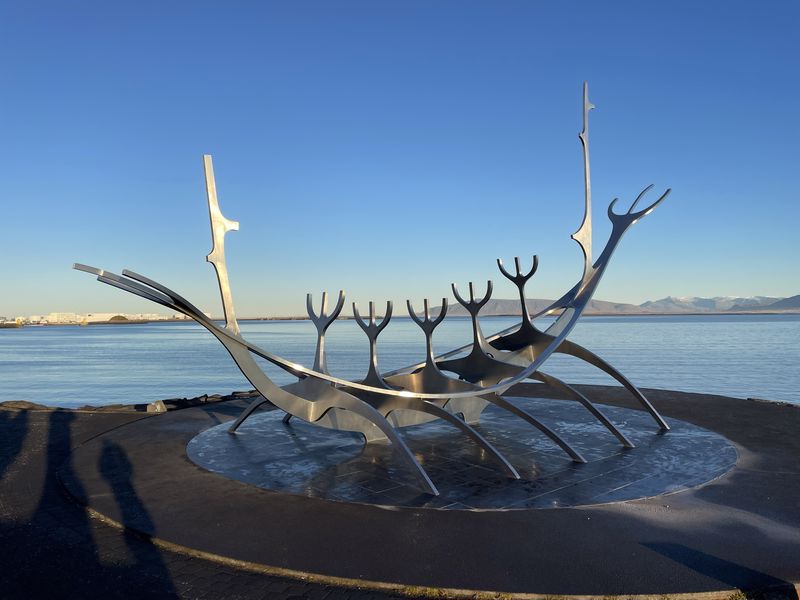
Museums
Although Iceland is known for its natural landscapes, in Reykjavik, there are some remarkable museums that are worth visiting. The first of these is the Perlan Museum, which looks like a pearl sitting on top of Reykjavik. The museum houses an exhibition of modern nature, a real indoor ice cave, a 4K planetarium, a 360° viewing platform, where you will learn how the Vikings lived in the area. The entrance costs 4,690 kroner, which is about 31.5e!
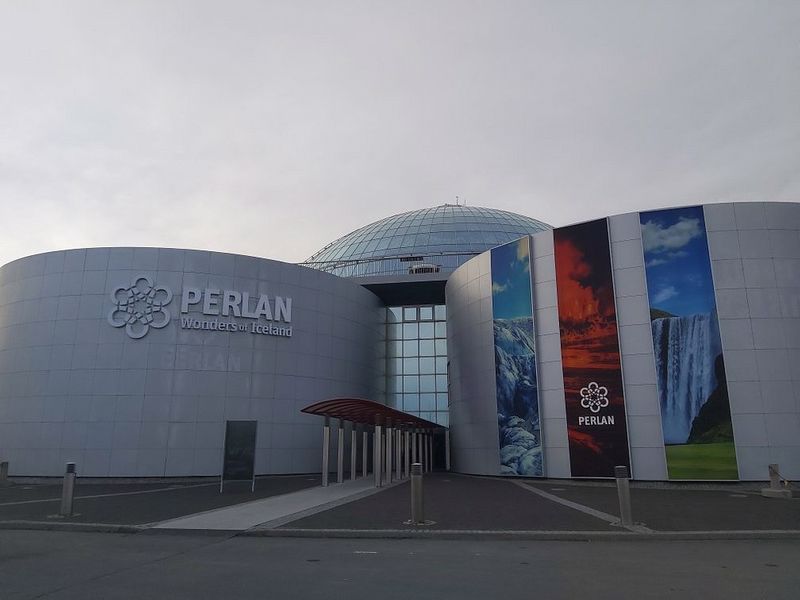
Then it's worth taking a stroll through the Whales of Iceland, which is a natural history museum that, of course, specializes in whales. The museum first opened in 2015 and is dedicated to educating visitors about the various species of cetaceans that have been seen in Icelandic waters throughout recorded history. The entrance costs 3,400 kroner, which is about 23e!

Finally, noteworthy museums are the Phallological Museum (Íslenzka Redasafn), which houses, the largest collection of male moles in the world (!) and the Maritime Museum (Sjóminjasafnið í Reykjavík), which is located next to the old harbor with the most important exhibit being a rescue boat Óðinn. Entrance to the first museum costs 2500 kroner, i.e. about 17e and to the second 2050, i.e. about 14e.
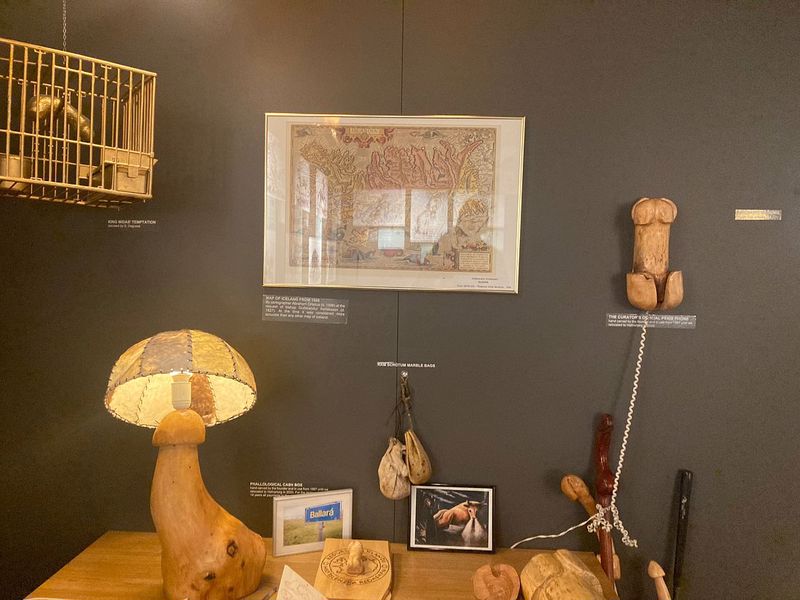
Blue Lagoon
Last but not least, I left the Blue Lagoon. The Blue Lagoon is one of the most famous sites in Iceland, located in a lava field near Grindavik and in front of Mount Thorbjorn on the Reykjanes peninsula. It is a location favorable for geothermal energy, which is supplied by the water used at the nearby Schwarzengi geothermal station. It may not be located within the city of Reykjavik and is about 50 kilometers from it, but it is a point that you should not miss while you are there. The milky blue hue of the water is due to its high silicon content. The silica forms a soft white mud at the bottom of the lake which bathers rub over them, while the water is also rich in salts and algae. The water temperature in the swimming area of the lagoon is on average 37-39 °C, which means that it is ideal for all months of the year. There are many packages depending on the time and day you want to visit the Blue Lake and the experience you want to live. The most economical package is estimated around 80e (!) and beyond the entrance, includes a silica mud mask, a towel and a drink of your choice. Finally, there are two more packages that cost more and offer more amenities and greater comforts.
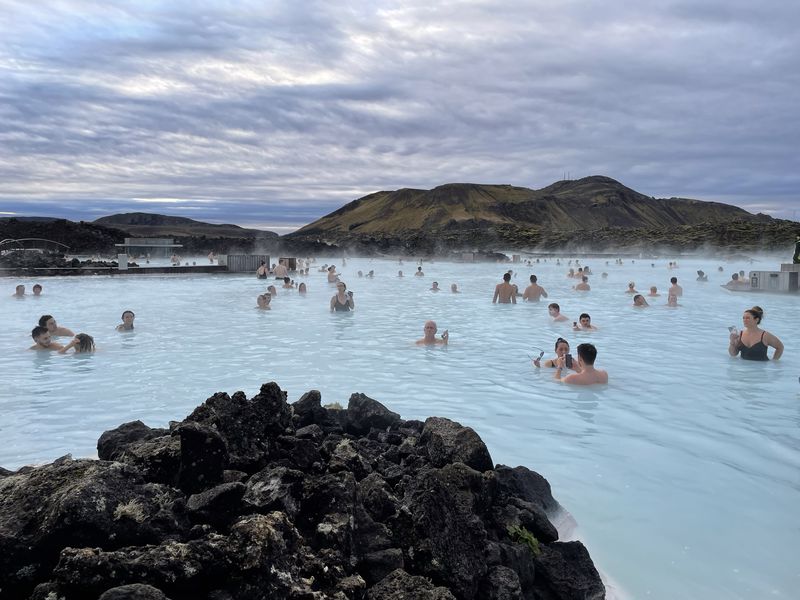
How to go
At the moment Thessaloniki is not directly connected by air to Reykjavík, so to reach the city you will have to make at least one stop. The most economical option comes from a combination of flights between Wizz Air and Ryanair, via Vienna and Milan respectively, which with proper planning can find tickets starting from 120€ round trip!
Where to stay
In Reykjavik, as in all of Iceland, of course, accommodation is extremely expensive. What we call value for money does not exist, as all hotels are overpriced. My suggestion is to avoid expensive hotels and find an inn or some rented room. This way you will get more economical and you will have a kitchen, if you want to cook something. So my suggestion is the Pavi Guesthouse, a charming inn in the city center, which in relation to the rest of the city has normal prices.
How to move
Reykjavík is a relatively small city, so while you're there, you probably won't need to use public transportation. Everything is accessible on foot, as the distances to the city center are short. But if the cold is bitter as usual, and you don't feel like walking, or you want to get somewhere outside of Reykjavík's boundary, the town has an excellent public transport network with buses! The alternative transportation solution is taxis, but they are quite expensive and I would not recommend them. Ultimately, if the weather is good, the city is suitable for bikes and rollerblades, since there are not many cars and there are bike paths everywhere!
What to eat
Icelandic cuisine is considered one of the strangest in Europe and is quite far from the cuisines of Mediterranean countries. It is mainly based on meat, such as sheep and lamb, various soups, as well as fresh and dried fish. The truth is that strange foods such as Hakarl shark or puffin, are no longer consumed by the locals but continue to exist in restaurants for tourist reasons! However, you should know that food in Iceland is very expensive, with a dish in a restaurant costing from 20 to 40e!! Thus, many locals and tourists resort to the solution of street food, the most popular of which is the hot dog! So for delicious hot dogs I recommend Baejarins Beztu Pylsur, for soups Svarta Kaffid, for burgers 2Guys and for pizza Reykjavik Pizzeria. Finally, for coffee I recommend Reykjavik Roasters, Kaffitar and Café Babalu, while for sweets with a Greek flair, Lookoomas!
Useful information

In Reykjavik we travel with a passport or a new type of Police ID, where the details are indicated in Latin characters.
In Reykjavik the language used is, of course, Icelandic. But the majority, even older people, speak English, so ask for clarification in the English language.
The currency of the country is the Icelandic krona (ISK) and its exchange rate at the moment is 1€ = 150.90 kronor.
Reykjavik is three hours behind Greece (GMT).
The Unpaid Consulate General in Reykjavik is located at 6 Baejarlind Street, is-201 Kopavogur and its telephone number is (00354) 5510700.
Getting to and from Reykjavik Keflavik airport is simple, as there are continuous Flybus bus services, which stop at the main station of the city. From there, for an extra charge you can board minibuses that will take you to your hotel.
The weather in Iceland is unpredictable and can change from minute to minute. Here there are no hot days, but less cold, so if you want to explore the country from end to end, then the most ideal season is summer. The temperatures are relatively high, while the days are quite long. Of course, if you want to see the Northern Lights, you should be in the country in winter. Then the cold and wind will be very intense, daylight is minimal, but this unique phenomenon in relation to the snowdrifts will compensate you!
Recommended excursions → South Coast, Golden Circle, Akureyri

If this article seemed interesting or contributed to your quality information, then you can like my facebook page: o_thessalonikios or follow me on instagram!
Mouzakidis Pantelis









